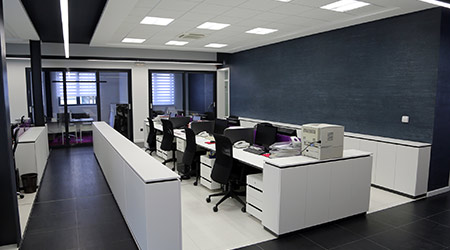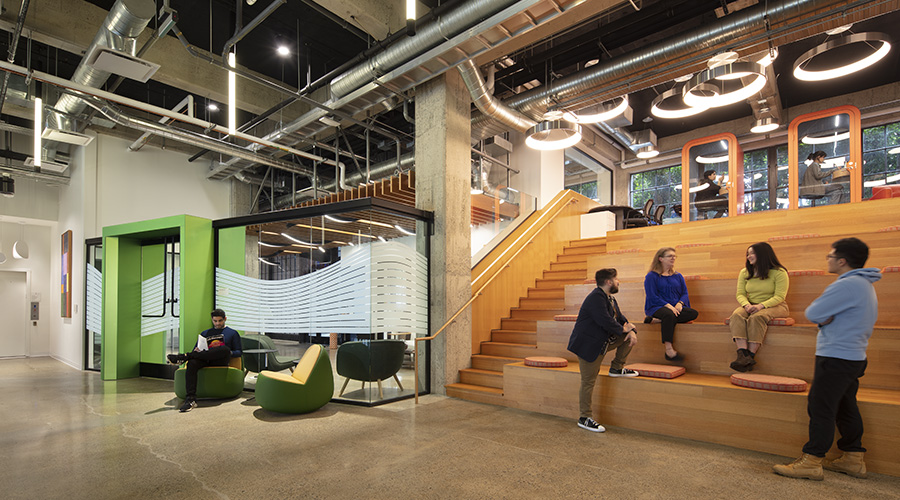Allowing for Varying Employee Ages, Preferences in Workplace Style
Part 2 of a 3-part article focusing on facility, generational, and work style issues that should be considered in workplace design
Facility managers have learned a great deal about what works and what doesn’t in workplace design throughout the evolution of the office environment. Now they face another unique challenge: Due to economic changes and longer life spans, contemporary workplaces now employ a wide age-range of people, all of whom have very different work styles and preferences concerning where and how they prefer to work. At the same time there has been a trend toward more open collaborative work environments, which not all generations may readily embrace. To keep all of the generations productive, facility managers need to address not only the different ways all employees are working, but also their different mindsets and thought processes regarding work.
Young Versus Traditional
It isn’t always beneficial for an employer to dictate the work style of an office or workplace. For example, the younger generation of recent college graduates, who are often accustomed to working in free-flowing and open environments at their own pace, may not respond well to having limitations applied to them in the workplace. New graduates are accustomed to studying in coffee houses with unlimited access to data and information. They are mobile and may not adapt well to the confines of a high-walled cubicle for eight hours a day.
Conversely, a more traditional employee might find it more difficult to focus in a large, noisy cafe or collaborative break room. They may prefer a quiet, enclosed area to concentrate. The aim of the design should be to provide a balance between dedicated public spaces and private, semi-private, and public areas to work, allowing employees to determine in which work setting they are most comfortable. The key here is creating a culture that prioritizes employee choice and control over where they work. If productivity and wellness are the goal, does it matter where the work occurred within the office as long as it is done correctly and efficiently?
Generational changes and real estate costs are driving a trend toward more open, collaborative work environments with a smaller personal footprint. The cubicle walls are coming down and personal spaces are decreasing. The large 8-by-8-foot and 8-by-10-foot workstations are a thing of the past. Businesses simply do not need the space previously dedicated to filing paperwork. This obsolete space can be repurposed into a variety of open and closed collaborative workspaces while helping to reduce the overall size of the office to a more sustainable footprint.
Some work environments have embraced the open office to the fullest extent, implementing benching-style workstations and even a “free-address” culture. In this type of design, rather than having designated spaces for each employee, everyone is given the ability to work where they want each day. Personal storage is usually provided in storage lockers. This idea doesn’t always work as intended, though, because human beings are innately territorial. Employees like a sense of comfort and home — often, they want to own a space. This can be achieved through a balance of smaller dedicated workstations and more private and collaborative spaces away from the workstation.
The conflict when deciding between an open workspace and a more traditional office-based design is both the generational gap in different work styles as well as the positions of the employees in the office. The goal is to create flexible workstations by choosing a furniture system that can be adapted and adjusted for different user groups. Investing in furniture that supports flexibility (panels can be stacked to raise or lower, components and work tools can be easily swapped out) to help employees with their day-to-day functional tasks ultimately provides a long-term sustainable solution as business trends evolve in the future.
Related Topics:














